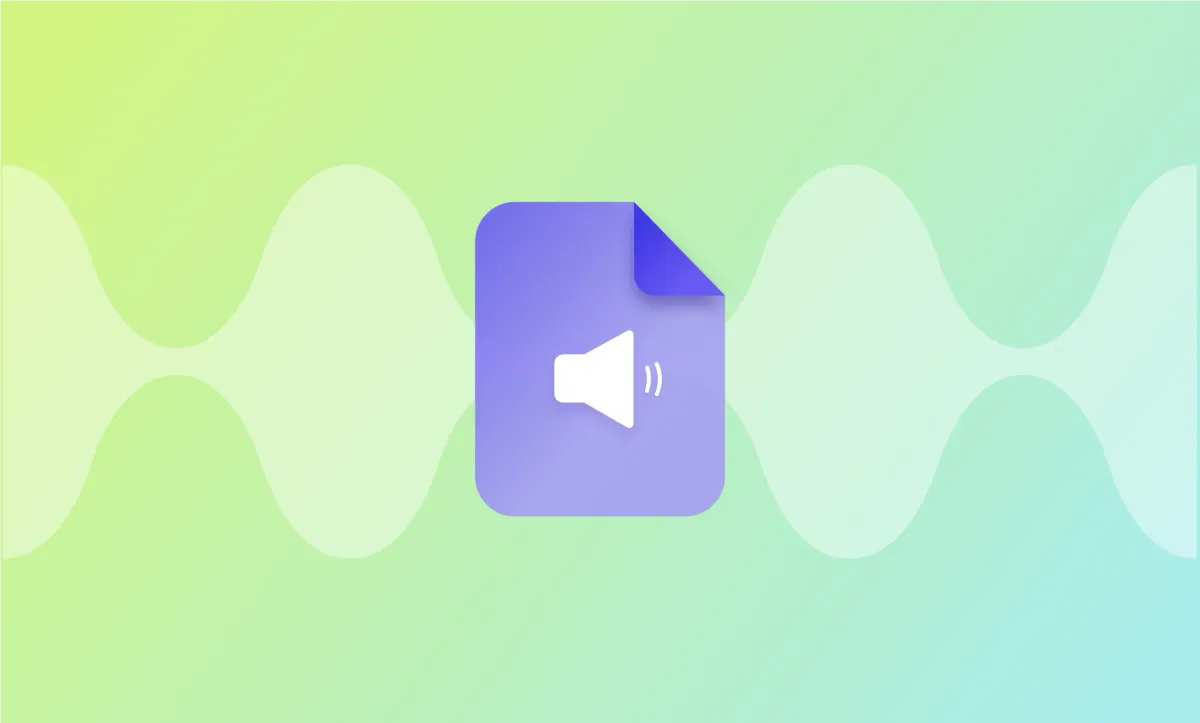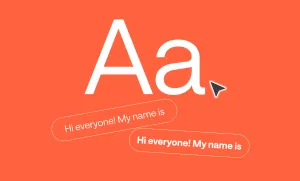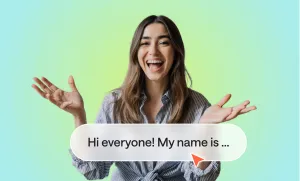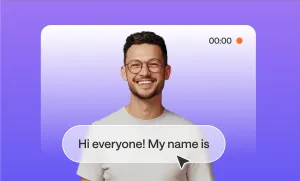Think about the last video you watched from your favorite content creator. What made it so enjoyable? The editing? The storytelling? The visuals?
Chances are, you didn’t immediately think of the music. But it was there, working quietly in the background, shaping how you felt, keeping you hooked, and making the experience unforgettable.
Sound, especially music, plays a much bigger role than we realize. It’s often so well-integrated that we barely notice it… until it’s missing.
In this article, we will cover:
- How music shapes emotion and behavior in video viewers
- The 3 key musical elements (tempo, tone/mode, genre) that impact engagement
- Best practices for picking music your audience will actually connect with
- Real examples of how creators and brands use music to tell better stories
- Where to find legal, royalty-free tracks that protect your content
Listen to this article
How Music Affects Emotions and Behavior
Adobe’s deep dive into the impact of music on social engagement shows the power of pairing the right music with your videos. 42% of music fans said the song directly influences their feelings about a product being shown. 29% said they were more likely to buy products featured with a song they like.
It’s clear that music moves people. But how exactly? Well, it turns out that when you hear music, your brain stem experiences an immediate emotional response. It also runs through an evaluative state.
Here’s how it works:
- The Brain Stem Reflex: Sudden or intense sounds grab our attention and trigger instinctive emotional reactions, like a jolt during a jump scare or a swell during a triumphant moment.
- Evaluative Conditioning: When certain music is consistently paired with specific scenes or themes (like a sad piano during heartfelt moments), our brains begin to associate that music with those emotions over time.
- Emotional Contagion: Music can express emotions that we unconsciously “catch.” If the melody feels joyful or tense, we tend to feel the same way just by listening.
When music stirs emotion, it doesn’t stop there. It often drives action. That’s why a video that feels good is more likely to get shared, commented on, or even lead to a purchase.
It’s because music doesn’t just affect our mood. It subtly guides our behavior, and when it does, two specific things happen in the brain:
- You experience rhythmic entrainment: Your body naturally syncs to rhythm. A steady beat can make you tap your feet, feel energized, or stay more engaged. This is what keeps viewers watching longer or encourages them to take action.
- You develop musical expectancy: Your brain is wired to anticipate musical patterns. When those expectations are confirmed or cleverly disrupted, it grabs your attention. This kind of “pattern interruption” can make key moments in a video more memorable and more likely to inspire clicks, shares, or reactions.
If you’ve found any of what you’ve read thus far interesting, what comes next should blow your mind.
How Musical Elements Shape Viewer Engagement
There’s a wealth of knowledge you can dig into about music and how it affects viewers. But there’s a simpler way to get straight to making an impact on your audience.
And it doesn’t matter whether you’re building yoga OTT apps for your video membership business or sharing day-in-the-life vlogs.
These three musical elements that, if used correctly, can make your videos more engaging.
1) Tempo
Tempo refers to the speed or pace of a piece of music, essentially, how fast or slow it feels. It’s usually measured in beats per minute (BPM). A slower tempo can feel calm, emotional, or dramatic, while a faster tempo can feel energetic, exciting, or urgent.
If you were to create a video of walking in a forest, using ambient music, like the song used in this video, instantly triggers a sense of calm, and even wonder.
2) Tone and Mode
Tone refers to the emotional quality or mood of the music, like whether it feels warm, dark, uplifting, eerie, playful, or intense. It's shaped by elements like instrumentation, dynamics, and harmonies. In video, tone helps reinforce the emotional atmosphere you want your audience to experience.
Mode is the musical scale that gives a piece its character. A musical scale is most commonly major (which tends to sound happy, bright, or optimistic) and minor (which often sounds sad, dramatic, or serious). Changing the mode can completely shift how your video feels emotionally.
This video shows how major and minor scales impact mood.
3) Genre
Genre refers to the style or category of music, often defined by specific instruments, rhythms, cultural roots, and emotional tones.
Examples include classical, hip-hop, electronic, jazz, rock, and cinematic. In video content, genre plays a huge role in setting the mood and aligning with the creator’s brand or message. Think epic orchestral for a motivational montage vs. lo-fi beats for a calm, introspective vlog.
If you’re creating a fitness app with HIIT or running exercises, EDM and hip-hop will be impactful genre choices. This Short is an example of how to pair music with visuals. The subject starts running as the beat drops, and camera shots change as the beat cycles.
How to use music in your videos
Blending tempo, tone, mode, and genre into your videos will take some practice, but once you have a handle on how to use them, the sky’s the limit.
These examples show what’s possible when you know how to wield music for impact.
Energizing music in fitness videos
Using high-tempo, motivational tracks to enhance user performance and satisfaction. In this fitness video YouTube Short example, while there aren’t any lyrics, note how the creator uses:
- Tempo Synchronization: Aligning music tempo with workout movements. Doing this in workout videos can boost viewer performance.
- Motivational Lyrics: Inspiring words can enhance user motivation.
Supporting your narrative
Selecting music that complements the narrative can have a desired emotional impact. Casey Neistat’s video on his last day of 2022 uses an upbeat track.
It gives viewers the sense that there’s lots to do before the first day of 2023, and rightly so. Casey documents and narrates everything he gets done.
You can mirror this approach by using:
- Narrative alignment: Choose music that matches the story's mood.
- Emotional enhancement: Use music to amplify the intended emotion of a scene.
Branded storytelling
You can use music to reinforce brand identity and create emotional connections. Apple’s "Behind the Mac" ad features a pulsating beat that immediately pulls you in.
It creates an instant connection with your inner rebel as the narrator describes how only a “certain kind of person” who “doesn’t take no for an answer” embodies unique traits. You then see prominent figures like Serena Williams, Billy Eilish, and Kendrick Lemar using Apple Macs.
Replicate this kind of impact by using:
- Consistent musical themes: Develop a signature sound that reflects brand values.
- Emotional branding: Use music to evoke specific emotions associated with the brand.
Best practices for using music as a content creator
You may be struck by a sudden and all-consuming desire to get to work on your next video after what you’ve read, but hang in there for just a while longer. Best practices, like these below, are valuable.
They can save you more time and stress. And if you use these ideas, they may even turn your videos into gems.
1) Figure out what music works best with your audience
To make music work for your video, you have to know who you're playing it for. Music that resonates with one group might completely miss the mark with another. These questions will help you find the best music to use for your videos.
2) How old is your audience?
Younger audiences might prefer fast-paced, energetic genres like pop, EDM, or hip-hop. Older viewers may lean toward acoustic, jazz, or more cinematic scores. While these are gross generalizations, they should help you examine what moves your audience.
A simple way to figure out what works is to examine content by other creators. Find a handful of creators who are succeeding with the audience you’re targeting. Watch their videos to find out what music resonates most with their audience.
3) Does your audience gravitate to any cultural influences?
Cultural background influences musical taste. Using culturally relevant or familiar sounds can strengthen emotional connection and relatability.
For example, in South Africa, there’s a large and growing movement of creators that use a music genre called Amapiano. Creators appealing to South African audiences would likely generate more engagement for their content if they used Amapiano music in their videos.
4) What platform trends are hot right now?
Pay attention to what’s popular on your platform (TikTok, YouTube, Instagram.) Each has its own ‘vibe’. Trending audio can boost reach, but make sure it aligns with your brand and message, and also supports a cohesive customer journey from platform discovery to conversion. But, once again, be sure that trending audio can be used legally.
5) Stay on the right side of the law
Video monetization is big business, but before hitting “publish,” make sure you have the rights to use the music in your video. Copyright infringement can lead to muted videos, demonetization, or takedown notices. Finding music you can use without infringing isn’t as difficult as most people think.
Here’s a list of resources, including free and premium platforms that don’t cost an arm and a leg:
Free Options:
- Podcastle – Massive library of royalty-free music, with instrumental versions of each track.
- YouTube Audio Library – Great for YouTube creators.
- Free Music Archive – Wide variety of genres.
- Pixabay Music – Easy to use and royalty-free.
Paid Options (More Variety & Quality):
- Epidemic Sound – Ideal for creators and commercial use.
- Artlist – Unlimited downloads and great cinematic music.
- PremiumBeat – High-quality, curated tracks for professional videos.
Lastly, finding ‘safe’ tracks for your videos can leave you feeling overwhelmed. But don’t let that be the reason why your videos are flagged for breaking the law.
Think of it this way: creators and professionals in every digital space take steps to avoid issues that could hurt their visibility or credibility. Designers double-check licenses before using fonts or stock images. Email marketers run checks with an spf lookup to ensure their messages aren’t flagged as spam. Podcasters source royalty-free music to stay on the safe side of licensing rules.
If you’re not sure which to use, go royalty-free. It’s safer, legal, and gives you peace of mind.
6) Polish your work
Great music falls flat without great sound quality. While you can get away with minor tweaks, like adjusting volume here and there, incorporating these practices will make your content sound more polished and professional:
- Normalize Audio Levels: Make sure your music doesn’t overpower your voice or dialogue. Normalize levels to prevent sudden volume spikes or dips that can distract or irritate viewers.
- Use Crossfades: Abrupt starts and stops can be jarring. Crossfading helps create smooth transitions between scenes or when moving from dialogue to music, keeping the experience seamless.
Sound should feel invisible, not because it’s unnoticeable but because it blends so perfectly. When you apply these tips, you’ll find your videos will become much more appealing and engrossing.
Find the Perfect Music with Podcastle
Music isn’t just an accessory. It’s a storytelling tool that deeply affects how people feel, think, and act. It sparks emotion and drives engagement, and by adding music to your videos (the right music, that is), you can transform your content.
With Podcastle's free music library, you can choose from hundreds of royalty-free tracks, each with instrumental, intro, and outro variations, so you can choose the perfect vibe for any project.
With that said, start thinking about your next video. What do you want your audience to feel? Choose music that supports that emotion, and watch your engagement rise.
About the Author
Amir Shahzeidi – Director of Demand Gen at Uscreen

|
Amir is the Head of Demand Gen at Uscreen, an all-in-one membership platform built for video creators. With Uscreen, creators can easily create paid memberships that include an on-demand video library, live streaming capabilities, and their own community space, all in their own branded site and apps. |








